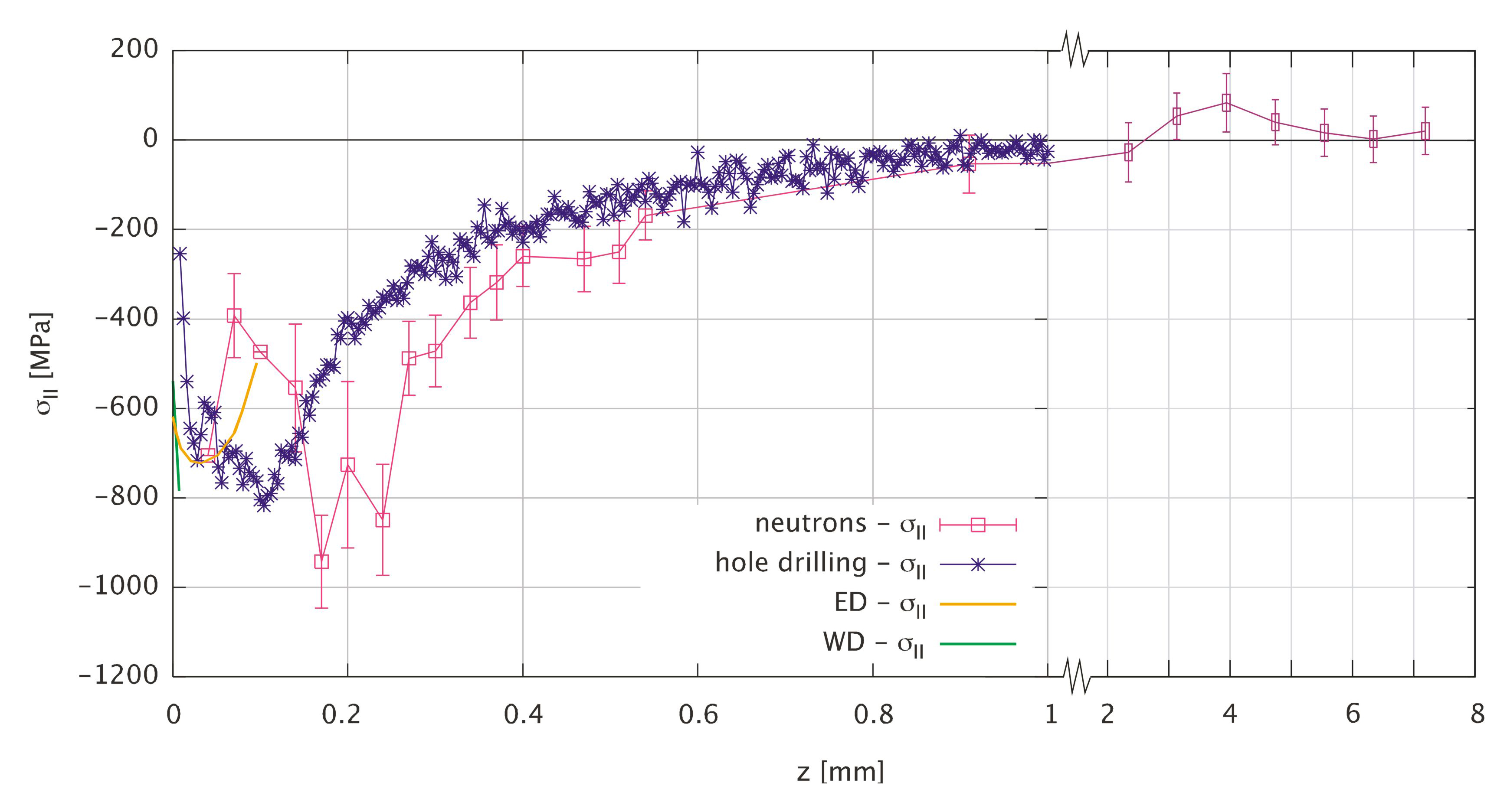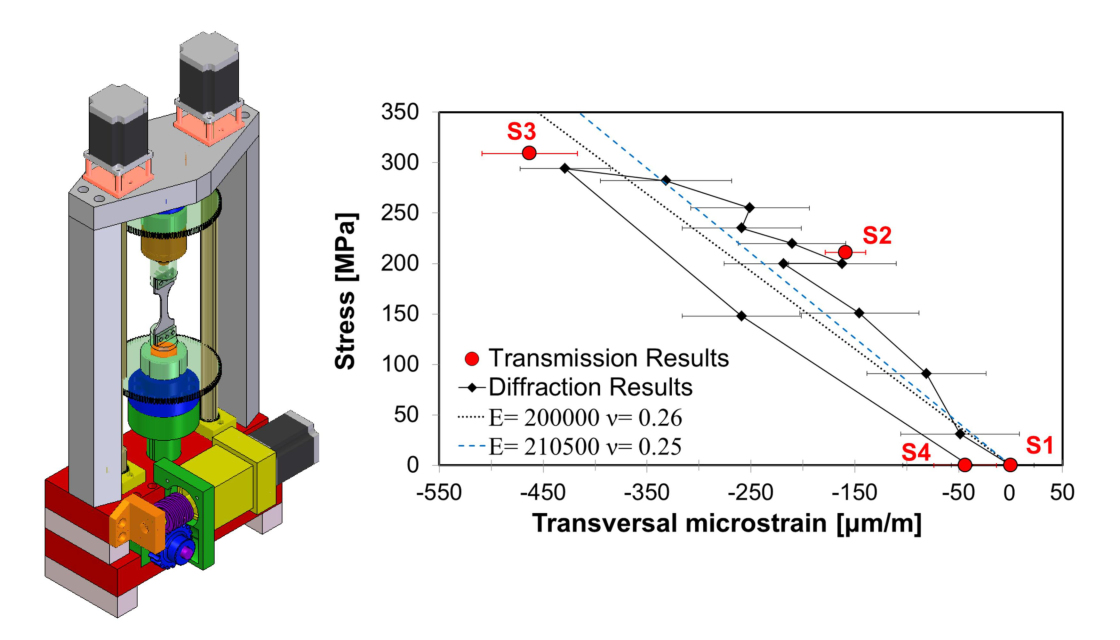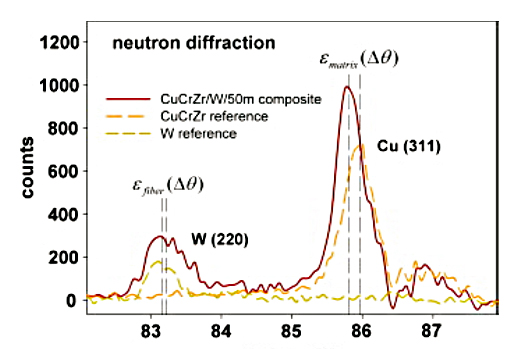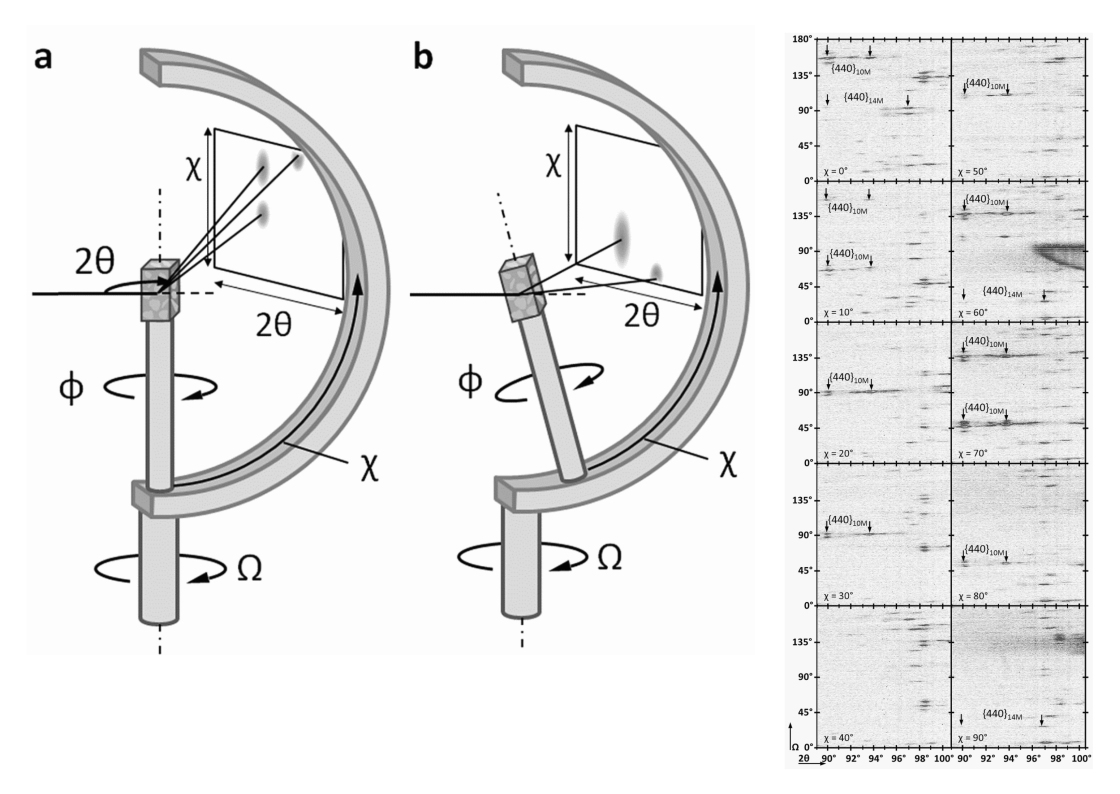Abteilung Mikrostruktur- und Eigenspannungsanalyse
Die folgenden Inhalte sind nur in Englisch verfügbar
Example Applications
Since monochromator upgrade in 2007 [1], the E3 has become faster and more adaptable to different types of measurement and has increased substantially the scientific output. Reliable near surface measurements have been made possible [2].
The investigations were performed on a plate with dimensions 50 x 25 x 9 mm³ made of ferritic steel 1.7255. It can be shown that the application of different methods for residual stress analysis comprising diffraction with X-ray, synchrotron and neutron radiation as well as mechanical testing allows for a complemental assessment of the residual stress state in the surface near zone and the intermediate region between the surface and the volume of mechanically surface treated material. (Fig. 1)
A custom developed (in-situ) multi-axial load frame is available to perform tensile, compressive and torsion material testing. Here, results from a steel sample measured on E3 are compared to results obtained by Bragg edge transmission imaging performed on the HZB instrument CONRAD [3]. (Fig. 2)
In situ strain measurements during thermal cycling have been performed [4]. Thermal load was applied with a well contacted heating wire. Temperature cycles were controlled by a thermocouple mounted on the sample in the gauge volume and connected with a computer programmed proportional – integral – derivative controller unit. (Fig. 3)
Eulerian cradles are available to study crystallographic preferred orientations, i.e. texture. For example, a polycrystalline Ni-Mn-Ga foam was studied in detail showing that the foam contains at least six randomly oriented millimeter-size grains with both 10M and 14M symmetry determined by neutron diffraction [5]. (Fig. 4)
Furthermore, neutron diffraction experiments were performed on Ni-Mn-Ga-Co single crystalline samples at room temperature (martensitic structures) and at temperature (austenitic phase) using a cryofurnace [6]. The picture on the right shows the hk0 neutron diffraction pattern resulting from a temperature of 500K. (Fig. 5)
[1] RC Wimpory, P Mikula, J Šaroun, T Poeste, J Li, M Hofmann & R Schneider. (2008). Neutron News 19. 16-19.
[2] T Fuß, RC Wimpory, M Klaus & C Genzel. (2011). Mater. Sci. Forum 681. 411-416.
[3] R Woracek, D Penumadu, N Kardjilov, A Hilger, M Strobl, RC Wimpory, I Manke & J Banhart. (2011). J. Appl. Phys. 109. 093506.
[4] M Schöbel, J Jonke, HP Degischer, V Paffenholz, A Brendel, RC Wimpory & M Di Michiel. (2011). J. Nucl. Mater. 409. 225-234.
[5] M Chmielus, C Witherspoon, RC Wimpory, A Paulke, A Hilger, X Zhang, DC Dunand & P Müllner. (2010). J. Appl. Phys. 108. 123526.
[6] K Rolfs, M Chmielus, RC Wimpory, A Mecklenburg, P Müllner & R Schneider. (2010). Acta Mater. 58. 2646-2651.





